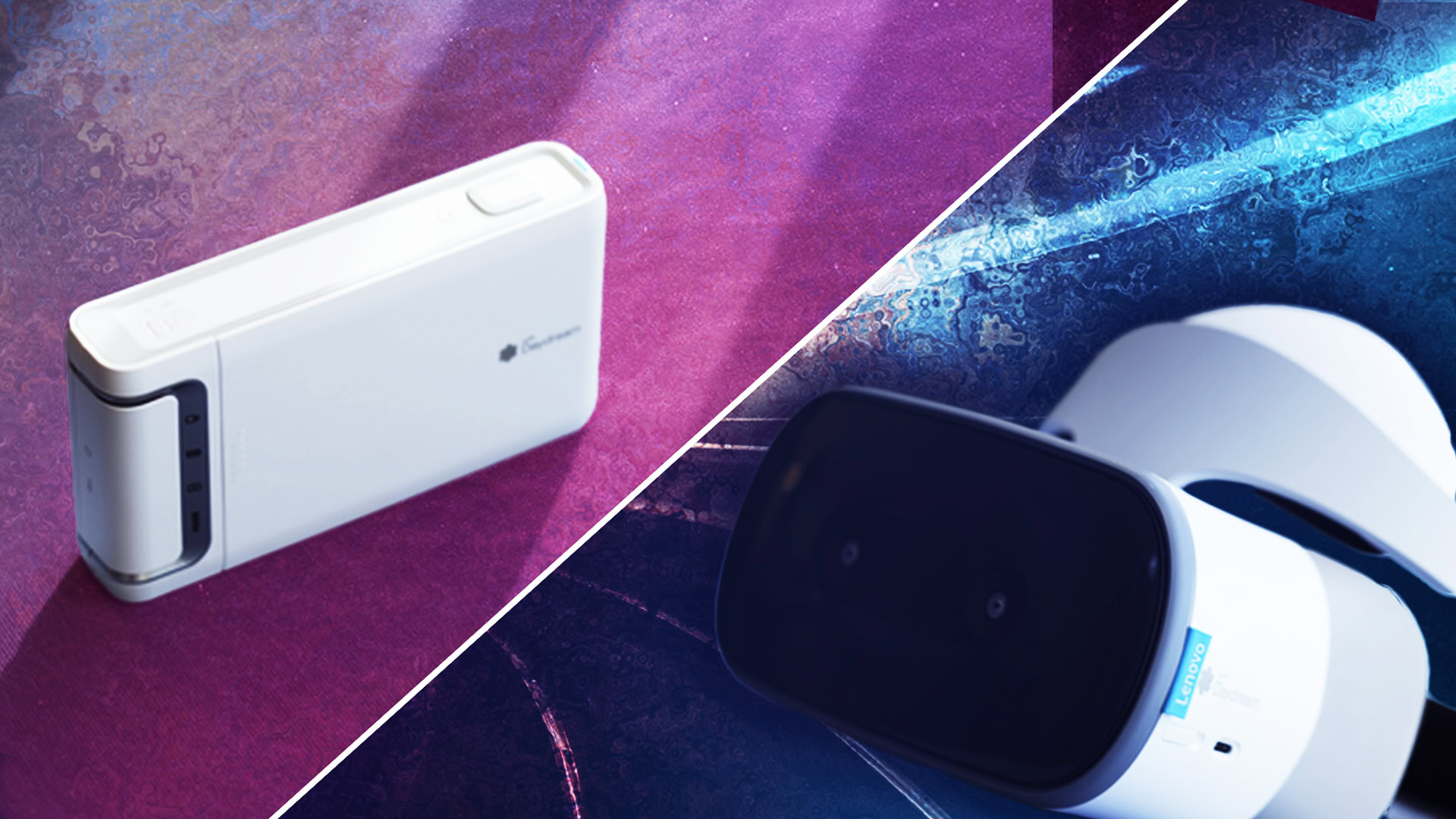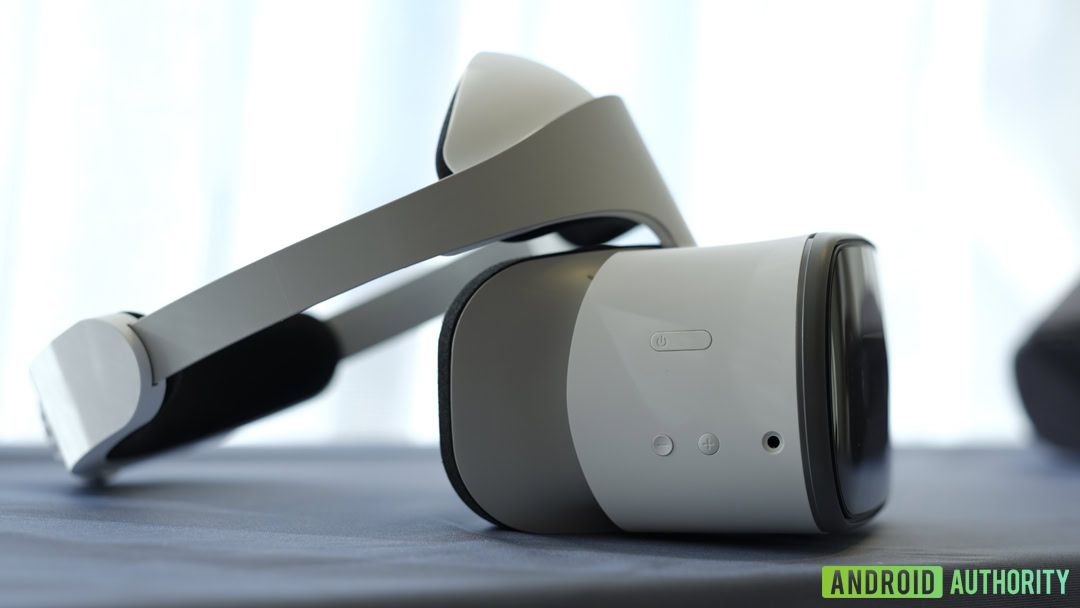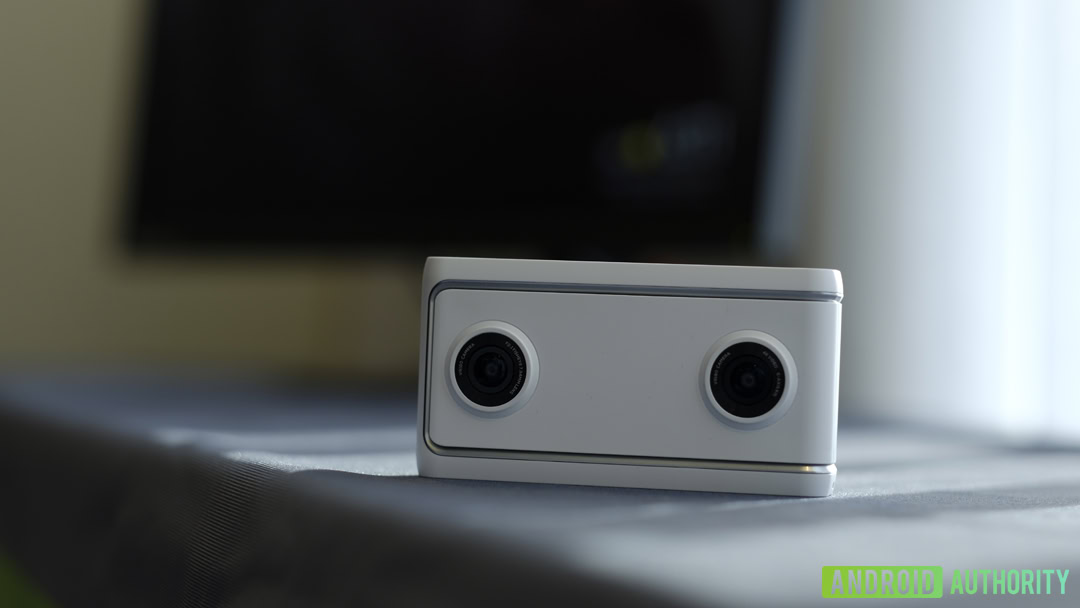Affiliate links on Android Authority may earn us a commission. Learn more.
Hands-on: Lenovo Mirage Solo is the first standalone Daydream headset

Google’s official standalone Daydream View VR headset has yet to make its way to consumers. However, the good news is that partners like Lenovo are stepping in to fill that gap. Here at CES 2018, we take a quick look and go hands-on with the Lenovo Mirage Solo and Camera with Daydream!

The Mirage Solo VR headset takes advantage of the Qualcomm Snapdragon 835 processor to power Google Daydream. As the “solo” in the name suggests, this headset doesn’t need a phone to be plugged in, and is a completely standalone device. The Mirage Solo uses the same Daydream controller as the official model to control the virtual world around you.
The Mirage Solo is definitely bigger than a regular VR headset, but is still relatively compact when you consider all that it’s packing inside. Unlike Google’s model, most of the pressure is on your forehead when you wear the Mirage Solo, and it remains comfortable enough even when using it for a longer duration.
The Mirage Solo comes with high quality lenses with a 110-degree field of view, which should keep everything nice and sharp while minimizing the screen-door effect. The field of view isn’t as wide as something like the PIMAX VR headset, but it’s pretty respectable for Daydream.
Since the headset utilizes the Snapdragon 835, you are also going to get “six degrees of freedom” to work with, or what Lenovo is calling “WorldSense.” That means you can duck, jump, and peek around corners to really feel like you are immersed in a new world, without needing additional wires.

Along with the standalone VR headset, Lenovo also unveiled the Mirage Camera. This is a stereoscopic camera that can capture 13 MP photos and videos in a wide, 180-degree field of view. The device itself doesn’t have a screen or viewfinder on it, but it’s easy to see what you are capturing via the available app.
Anything you capture can be used with Google Daydream or shared on YouTube and Google Photos. You can also use the device to run a livestream with just a tap of a button. A tripod thread is built into the bottom, so it is obvious that Lenovo wants you to take this with you wherever you go.
So there you have it for this quick look at the Lenovo Mirage Solo and Camera! The Mirage Solo VR headset is priced at “under $400”, while the Mirage Camera will be offered for “under $300”. Both devices are expected to be available later this year in Q2 2018.
Stay tuned to Android Authority for more great coverage from CES 2018!